Kyoto Cuisine: 12 Must-Try Foods and Local Dishes

Discover Kyoto's unique culinary tradition through dishes that have been invented and popularized in Kyoto. From matcha tea to obanzai and Kyoto confectionery, we introduce their features and places where we can try them.
Authentic Foods that Represent Kyoto
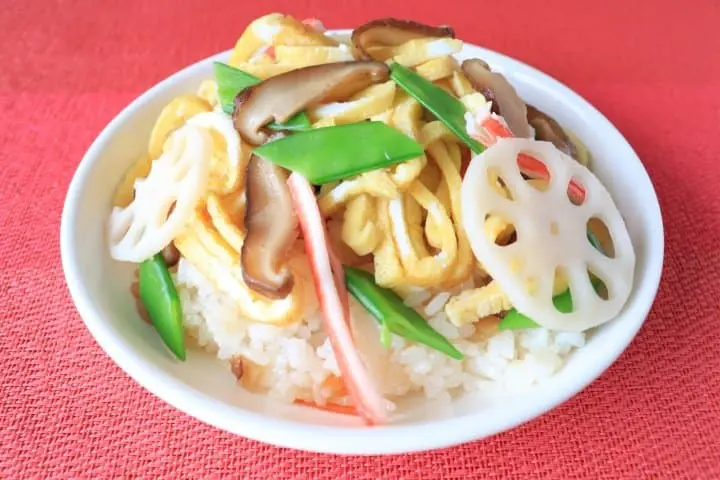
Kyoto, the well-known former capital of Japan, has a deep, unique culinary tradition.
Traditional Kyoto-style food is referred to as Kyo-ryori, “Kyoto-style cooking.” Kyoyasai is the word used to describe the heirloom vegetables grown in the region. The area’s historical pride and local specialties distinguish its food culture from Tokyo and the rest of Japan.
Centuries of generational succession have preserved Kyoto’s ancient practices, from product cultivation to restaurant design and serving styles. As Kyoto changes to adapt to the needs of its new guests and residents, make sure to stop for these must-try Kyoto foods that represent the essence of Kyoto!
Must-Try Kyoto Cuisine
1. Uji Matcha
2. Obanzai
3. Kyozushi: Kyoto-style sushi
4. Kyo Tsukemono Pickles
5. Kyokaiseki
6. Yuba
7. Kyogashi: Kyoto Confectionery
8. Nishin Soba
9. Kinugasa-don
10. Flowing Somen (Summer)
11. Unagi no Kinshi-don
12. Shojin Ryori: Buddhist Cuisine
Read also
1. Uji Matcha
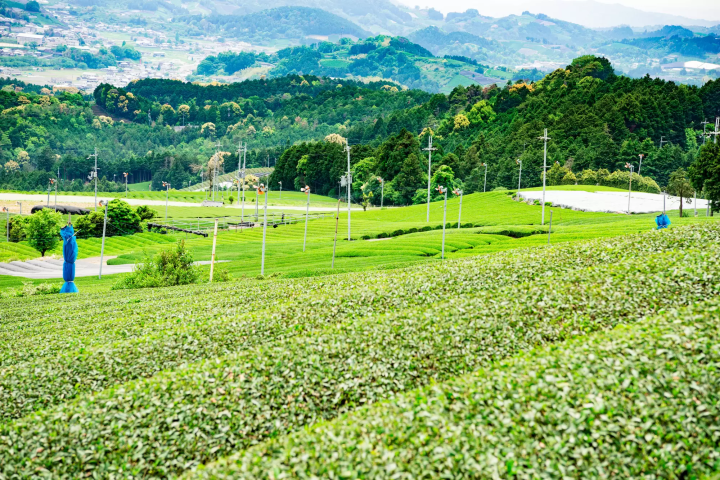
Photo by Pixta
Uji matcha is an easily recognizable phrase used all around the world to discuss Japanese matcha tea. But actually, Uji is a region of Kyoto!
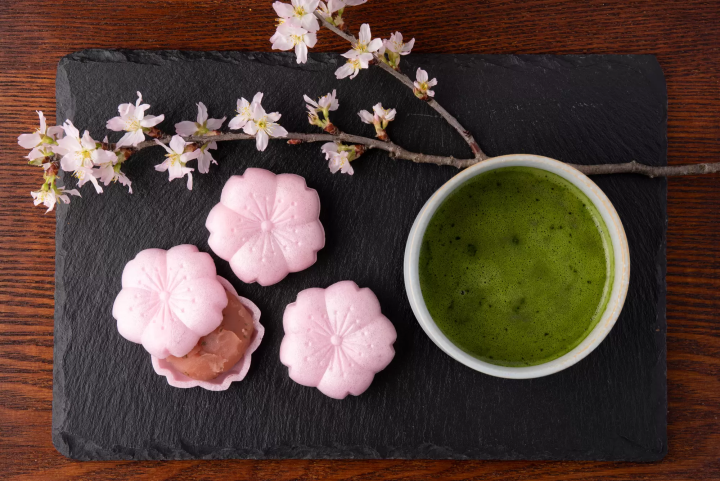
Photo by Pixta
Uji produces the highest volume of matcha in Japan, some of which becomes the rich, grassy, ceremonial grade matcha that has become extremely popular.
Although matcha lattes aren’t difficult to come by, visitors will have a more authentic experience trying out a calming tea ceremony in a traditional tea room or sampling some of the matcha-infused desserts that locals love.
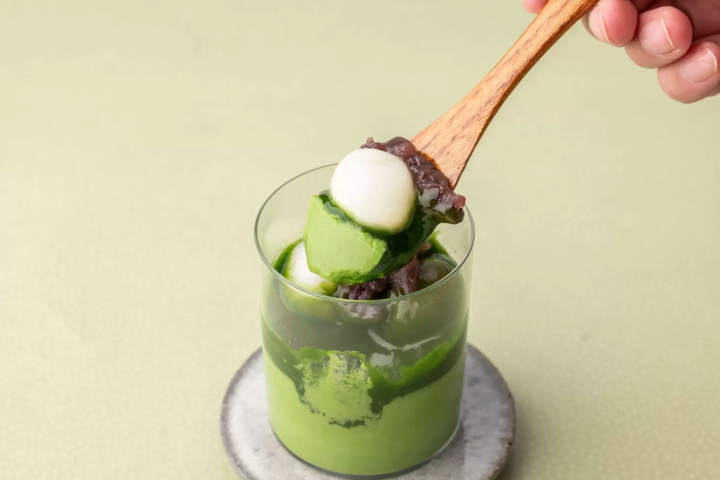
Picture courtesy of PR Times
Tsujirihei Honten specializes in parfaits and sweets made from Uji matcha. The company’s history dates back to the pre-modern times. Now, Tsujirihei is known for serving high-quality matcha with a process cultivated over generations of masterful techniques.
In addition to matcha tea, Kyoto’s tea culture spans ryokucha, gyokuro, sencha, and even hojicha (roasted tea), with a growing interest in Japanese black tea by young masters. While in Kyoto, don’t hesitate to expand your palate beyond matcha!
Read also
2. Obanzai
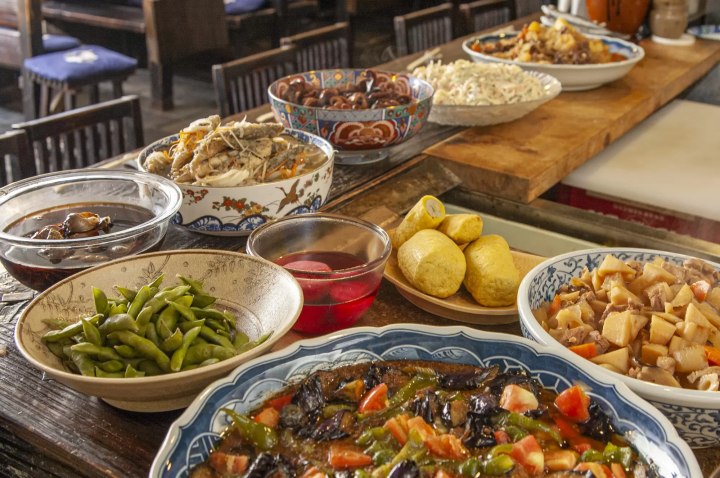
Photo by Pixta
Obanzai is the traditional casual style of serving that Kyoto’s izakaya and neighborhood restaurants have used for hundreds of years. Obanzai style dining is called osouzai in the East, and features the same kitchen setup.
Large, often highly decorated, and prized bowls line a chest-height counter, from which guests can see their food up close before selecting their choices. The foods are made ahead of time and set out before service, ready to be reheated and served on order.
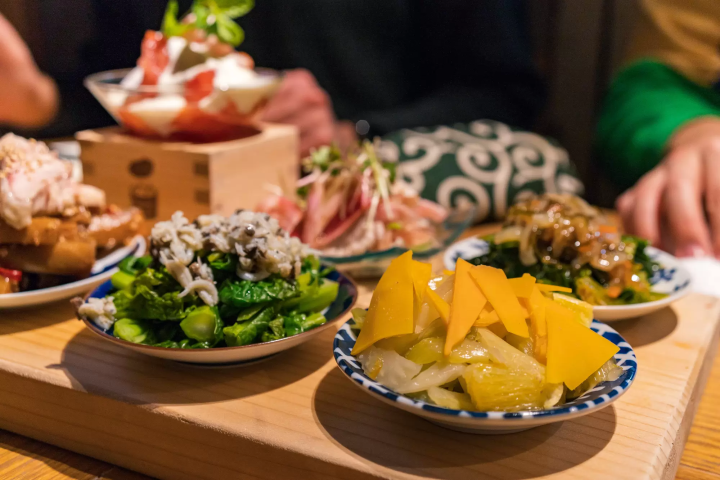
Photo by Pixta
Because of its convenient arrangement, obanzai can be served quickly and is popularly used both for proper meals as well as drinking snacks.
Obanzai dishes may be stewed, stir-fried, or dried and often make use of Japan’s essential flavors: soy sauce, mirin, sake, and sugar. Miso-simmered fish and vegetables, pickles, and other homey dishes are frequently included in banzai line-ups.
Niyasai Onikai
Address: 388 Komeya-cho, Kawaramachi-dori, Shijo Agaru, Nakagyo-ku, Kyoto City 2nd Floor
Business Hours: 17:00 – 23:00 (Last Order at 22:30)
Online reservations are available via the homepage.
3. Kyozushi: Kyoto-style sushi
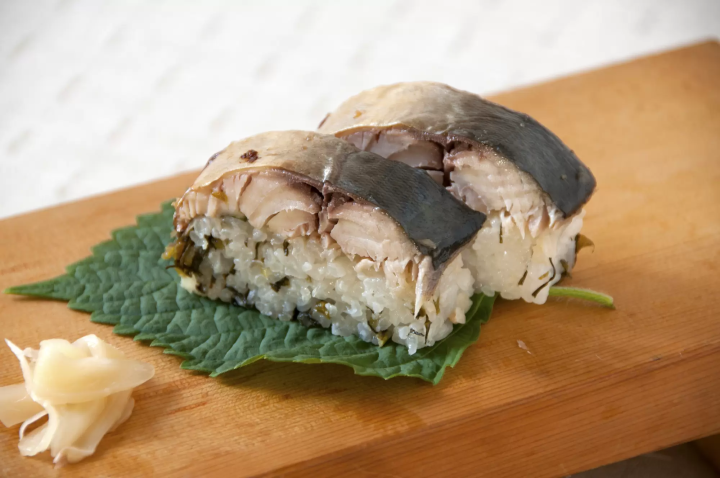
Photo by Pixta
The three elemental types of kyozushi (Kyoto-style sushi) are chirashi, pressed, and temari sushi. Unlike Edomae sushi, Kyozushi generally uses more advanced preservation techniques and stronger flavors.
The most famous kyozushi is easily saba-sushi, a pickled, pressed mackerel sushi with a strong vinegar flavor and firm bite. Saba sushi is actually very simple to make, requiring only a few ingredients, with a flavor that develops over a few hours, allowing diners to choose their preferred flavor and texture. Buy a box for the Shinkansen at Kyoto Station’s Ekiben stands.
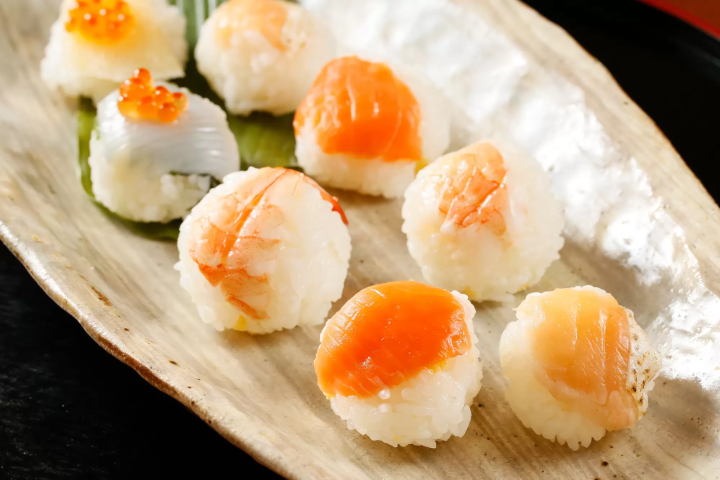
Photo by Pixta
Temari sushi comes in the form of petite balls of rice, more spherical than onigiri, and delicately arranged one by one in special boxes. It's said that this form of kyozushi was developed to be easy for maiko and geiko to eat.
Visitors lodging in the Gion district of Kyoto will find the temari sushi breakfast offered at OMO 5 a convenient option. These balls are just one mouthful each, small enough to eat without touching the lips or marring delicate makeup.
Finally, chirashizushi, sometimes called steamed sushi, features a delicate array of julienned omelet, cooked shrimp, shaped kamaboko fish cakes, and other gently processed ingredients such as steamed unagi or prepared shiitake mushrooms and cucumber. These vibrant boxes of rice and toppings are popular among children and rarely include raw ingredients.
4. Kyo-tsukemono Pickles
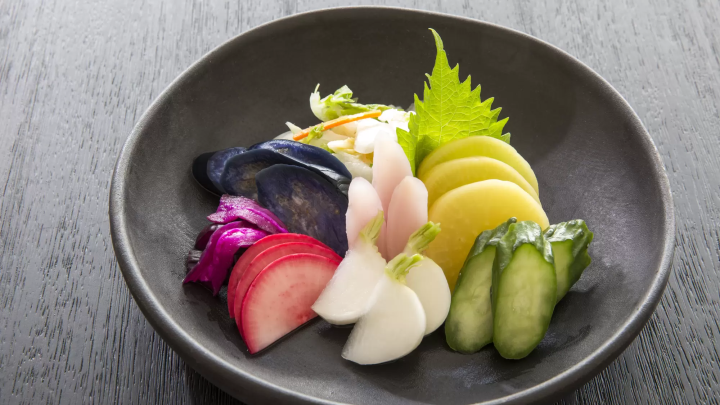
Photo by Pixta
Kyoto has a rich history of preservation and pickling, ranging from seafood to vegetables. The region’s deep love of fermented foods has even birthed restaurants such as Doi, which offers an all-pickle buffet right inside Kyoto station.
Some Kyoto-style pickles worth trying are the senmaizuke, suguki, and shibazuke varieties. Senmaizuke are “thousand slice pickles,” made from very thinly sliced and pickled white radish, aged in a saline, kombu, and pepper solution in wooden barrels. This traditional pickle was popularized in the 1860s among the ruling family in Kyoto.
Suguki pickles are sour turnip greens simply seasoned with salt and left to ferment from late winter to spring. In modern times, the pickles can be completed in just two weeks using a warming chamber, but traditionally these preserved vegetables were a summer delicacy limited to shrine-tending families and nobility.
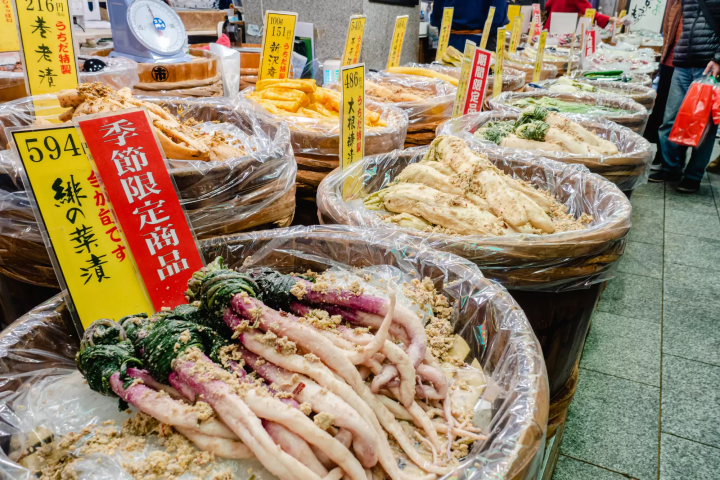
Photo by Pixta
Finally, shibazuke are the most iconic and popular Kyo tsukemono, made by pickling eggplant in salt and red shiso leaves, which stains them with a beautiful purple hue. These pickles are crunchy and refreshing.
Doi Shibazuke
Address: 1-65-2, Hanayacho, Nakagyo-ku, Kyoto City, Kyoto Prefecture, Japan
Hours of Operation: Monday – Saturday: 10:00 – 18:00
Closed on Sundays and Public Holidays
Read also
5. Kyokaiseki
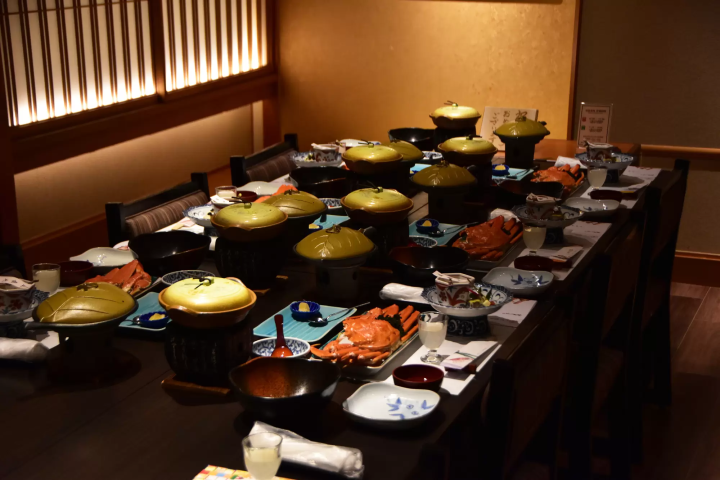
Photo by Pixta
Kaiseki cusine is now known for its extravagant, multi-course meals that span several hours, but its origins were far more humble. Taking its name from the warm stones monks would use to stave off hunger, kaiseki meals were originally very simple, consisting of three small sides, rice, and miso soup.
However, as the serving style evolved, its entanglement with the ruling class and ceremonial tea services brought about the kaiseki enjoyed today, a combination of art and food. As the former seat of the imperial family, Kyoto is considered the birthplace of kaiseki dining, with meals that uphold its ancient traditions dubbed Kyokaiseki.
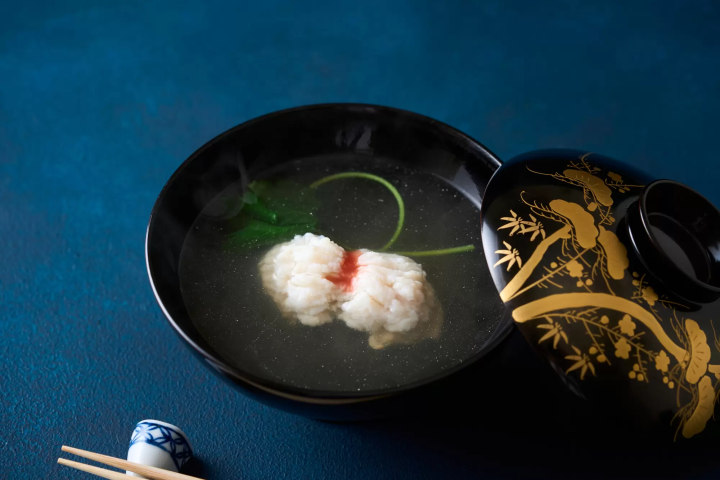
Photo by Pixta
Kaiseki meals may include ten or more courses and follow the rules of five in Japanese dining. Five colors, five cooking styles, and so on.
A true kaiseki meal, such as those enjoyed at 3 Michelin-starred restaurant Kichisen, varies daily, depending on the season, weather, and guest temperament and background.
Kichisen
Address: 114 Tominokoji-cho, Nakagyo-ku, Kyoto City, Kyoto Prefecture, Japan
Hours of Operation:
Lunch: 12:00 – 14:00 (Last Order at 13:30)
Dinner: 18:00 – 21:00 (Last Order at 20:00)
Closed on Sundays and Public Holidays
6. Yuba
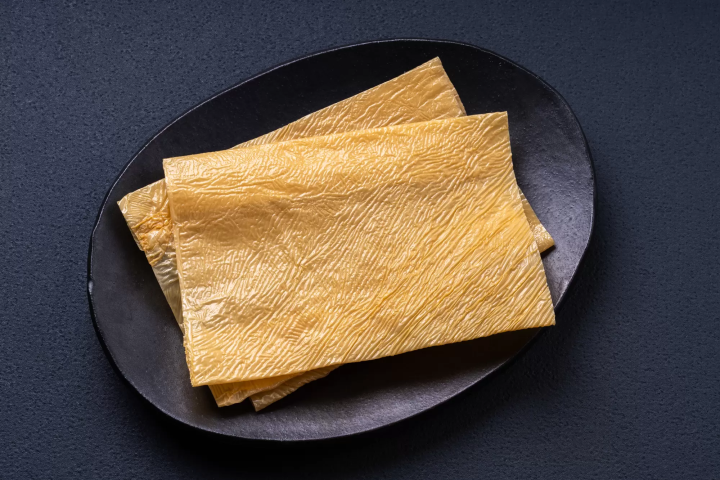
Photo by Pixta
Soy products are very popular in Kyoto. While it’s perfectly reasonable to stop at the simple tofu dishes, such as yudofu or chilled tofu with herbs, silky sheets of yuba are a league all their own. Yuba forms on the surface of heated soy milk before tofu hardens into chunks. These protein-packed sheets can be dried and preserved for later use or served fresh.
Yuba can be enjoyed chilled or warm and is sometimes served in place of noodles or even on top of rice as sushi! While fresh yuba, made from just soybeans and water, is silky-soft, dried yuba takes on a meaty consistency, making it perfect for boiling in stews or hotpots.
Senmaruya’s founders are yuba specialists who began their craft in 1805. They serve affordable meals with yuba as the main-event. Yuba can be enjoyed in a variety of creative ways, even as dried chips which pair perfectly with sake or beer.
Senmaruya
Address: Sakaimachi-dori Shijo-agaru, Nakagyo-ku, Kyoto
Access: 7 minutes on foot from Shijō Station on the Karasuma Subway Line
Business hours: Sales 10:00 am–6:00 pm Meals 10:00 am–3:00 pm (last order)
Closed: Wednesday
7. Kyogashi: Kyoto Confectionery
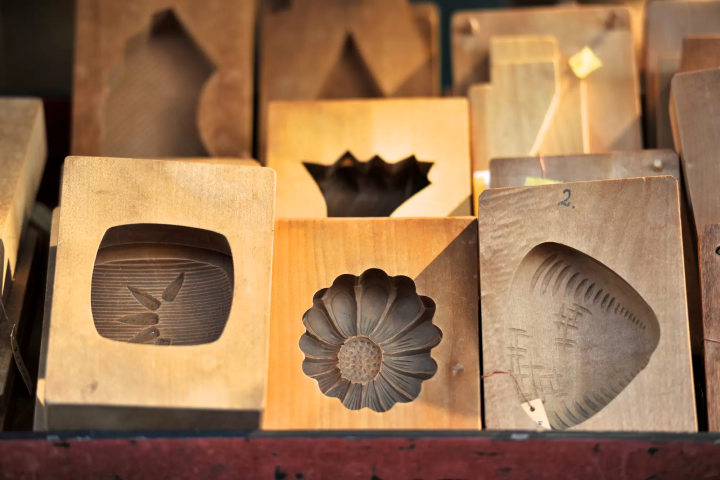
Photo by Pixta
Kyoto’s historical tea culture also makes its legacy of tea sweets as fascinating as it is delicious. Kyoto's wagashi are called Kyogashi (Kyoto-style confectionery).
During tea ceremonies, a bite-sized sweet is served to prepare the palate for the bitterness of fresh matcha. Some traditional varieties include nerikiri, which are seasonal, decorative candies made of soft bean paste, higashi (dry confectionery), and monaka (rice wafers with red bean paste filling).
Higashi are the most simple and delicate wagashi, made of finely pressed sugar powder called wasanbon. With a crumbly, sandy consistency, they almost resemble a butter-less shortbread cookie. These pale, delicate sweets make a beautiful souvenir as they have a long shelf life.

Photo by Pixta
Monaka are rice wafers with a bean paste or cream filling. Traditionally, monaka were filled with red bean paste and sometimes candied chestnuts when the season called for it, but today monaka come in a wide variety of flavors. Matcha-an (matcha-paste) monaka are a special Kyoto-themed treat that can be found at omiyage souvenir shops around Kyoto.
Kyoto is also known for its simple triangle-shaped wagashi wrapped in translucent gyuhi mochi sheets.
Learn to make simple wagashi at one of Kyoto’s many traditional craft experiences, such as this one near Fushimi Inari Taisha!
Read also
8. Nishin Soba

Photo by Pixta
Like Kyozushi, nishin soba was born out of Kyoto’s need to preserve fish due to its distance from the water. Nishin soba is a rustic dish popular with older generations and people from the countryside.
Nishin itself is a word for sweet-stewed herring, which are simmered in a sugary, salty sauce until semi-dried and preserved. Not unlike jerky, its deep but not overwhelming flavor makes it an addictive, umami treat.
When served on earthy buckwheat soba noodles, the herring’s juices melt into the broth, adding a rich flavor to the mild Kyoto-style dashi that deepens as the dish cools off. Nishin soba represents many parts of Kyoto’s traditional food culture in one dish, from its light broth to its use of rustic elements to the fragrant herbs that are often used to offset the herring’s powerful sweet and salty flavor.
Visitors can try it at the store that invented nishin soba, Kyoto Sohonke Nishin. The dish was first served in the 1800s and retains much of its traditional flavor and preparation to this day.
Kyoto Sohonke Nishin - Matsuba (Main branch)
Address: Kyoto City, Higashiyama, Shijo Ohashi Higashi-iru Kawabatacho 192
Hours: Open 11:00 - 19:00 (last order at 18:45)
Closed: Wednesdays and Thursdays (may change for holidays depending on the season, also subject to change depending on the state of the pandemic)
9. Kinugasa-don (fried tofu and egg on rice)
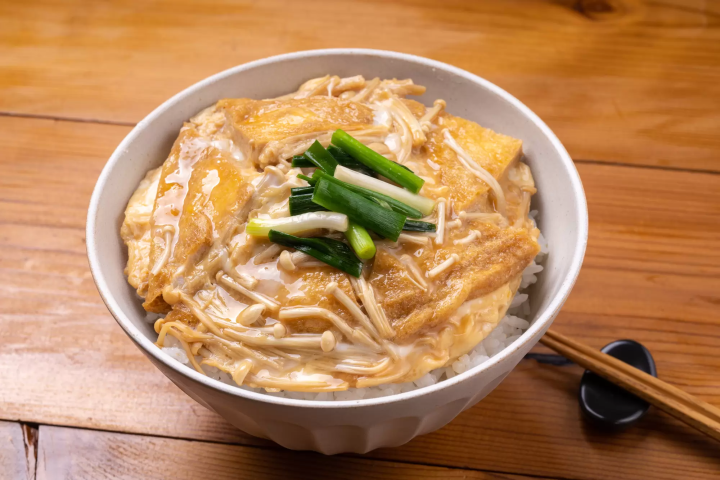
Photo by Pixta
Kinugasa-don’s name is unique and historically complex, considering its simple ingredients. This is one of Japan’s traditional tamago-toji dishes, in which a protein is simmered with dashi and egg to make a fluffy, umami scramble.
Kinugasa-don uses fried tofu, called aburaage or usuage, onions, and egg, making it a vegetarian alternative to donburi like katsudon or oyakodon.
This quick and hearty meal was popularized in ancient Kyoto. Its name refers to the silk on the underside of traditional umbrellas, but the reason it was named such has to do with yet another connection to Kyoto’s former seat of the empire.
In the Heian era (794-1185), it’s said that the emperor once covered a mountaintop - also named Kinugasa mountain - in white silk so that he could enjoy the view of snow-capped mountains during the summer. The rolling ripples of tofu and yolk mixed with soft-simmered egg white resembled the mountaintop in this legend, so its first chefs decided to name it after the silk-themed legend. Try it at rustic diner Yakko, in operation since the early 1900s!
Yakko
Address: Ebisugawa-dori, Muro-machi Higashi Iru, Minami-gawa, Nakagyo ward, Kyoto City, Kyoto Prefecture
Hours: Monday - Friday 11:30 - 19:00, Saturdays 11:30 - 14:30
Closed: Sundays and Holidays
10. Nagashi Somen (Summer Flowing Noodles)
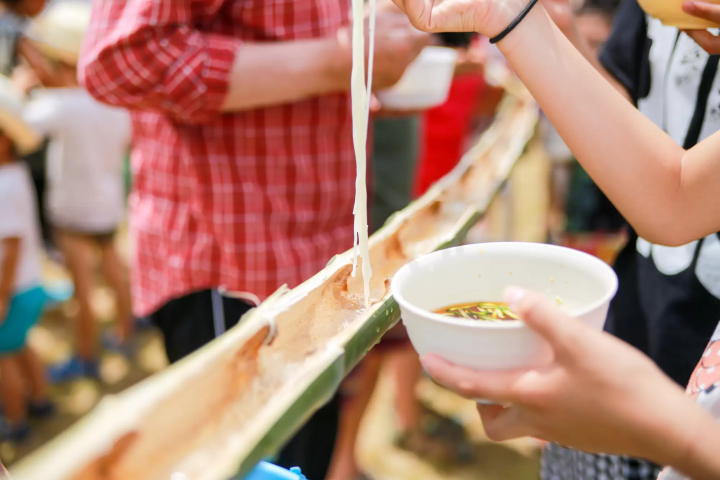
Photo by Pixta
Nagashi somen, also called flowing somen, is an interactive summer specialty dish that’s most fun when enjoyed by the riverside at one of Kyoto’s “floating” restaurants.
Somen are very finely cut noodles that are traditionally served during the hottest part of the year. Flowing somen adopts a special contraption to send bundles of prepared noodles straight to guests!
This activity-cum-meal makes use of bamboo chutes with a continuous stream of water. The practice was popularized in the 50s to highlight the use of fresh spring water.
Kitchen staff send noodles down the chute for diners to catch with their chopsticks and dip in a bowl of tsuyu, not unlike dipping soba. Diners have to be pretty agile to make a whole meal of this fun activity. The noodles are notoriously slippery! However, there are a few tricks, such as holding your chopsticks in the water as a dam when the chef shouts “Ikuyo!” to grab a serving.
Visitors can try their hand at catching some flowing somen at Hirobun, just outside of Kyoto’s main city area.
Read also
11. Unagi no Kinshi-don
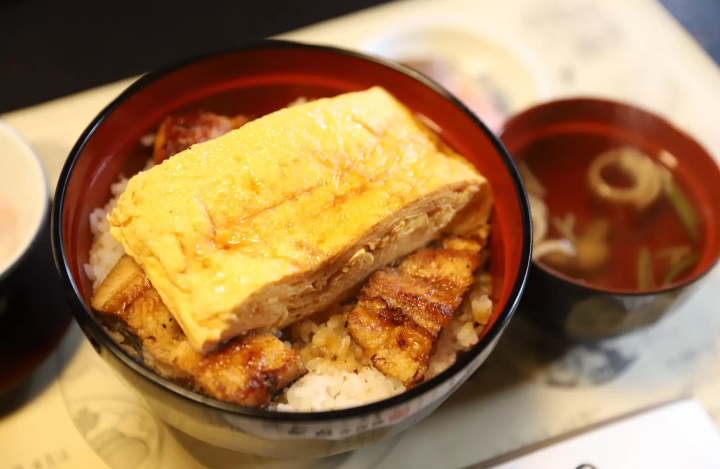
Photo by Pixta
This regional donburi was likely not invented in Kyoto, though Kaneyo would argue it was. Either way, its popularity in the region makes it a must-try food when visiting. There are even super viral versions of this succulent bowl of unagi and omelet!
Unlike Kinugasa-don, Unagi no Kinshi-don is marked by its layers of fluffy sweetness and addictive toppings. The dish is said to have been invented at Michelin Bib-gourmand-awarded Kyogoku Kaneyo by its fourth-generation master. The eel itself is distinguished from Edomae, or Tokyo-style, by its carving and preparation methods.
The eel is grilled directly over coals, allowing the fat to melt and soften before being brushed with a Kansai-style tare. This grilling style results in crispy outside skin and fluffy meat, which pairs perfectly with the umami from its dashi omelet topping.
Kyogoku Kaneyo
Address: 468 Kyogoku-cho, Kamigyo ward, Kyoto City
Hours of Operation: Monday – Saturday: 10:00 – 17:00
Closed on Sundays and Public Holidays
12. Shojin Ryori: Buddhist Cuisine
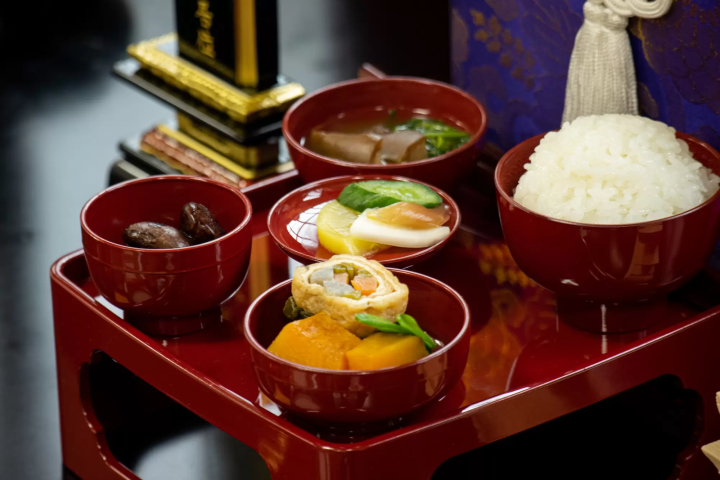
Photo by Pixta
The final feature on this list is Shojin Ryori, the traditional cuisine of monks, which even visitors can enjoy when visiting certain temples.
This type of cooking centers around balance and harmony with the earth and within the body. Shojin Ryori is almost entirely vegan, with some permissions given for monks to have small amounts of meat to regain stamina after especially trying tasks, such as ascetic pilgrimages or training.
Typical Shojin Ryori dishes include wild mountain plants in spring and root vegetables in the winter, powered by protein from beans and soy dishes, such as tofu. Powerful spices and seasonings such as garlic or peppers are also avoided, yet Shojin cuisine has no lack of flavor!
Shojin ryori, like kaiseki, uses the principle of five to keep dishes healthy and interesting. The rules of five include using five colors: green, yellow, red, black, and white, as well as five flavors and five preparation techniques.
Enjoy Kyoto Cuisine
Of course, Kyoto offers many more styles of cuisine, traditional snacks, and tasty sweets, but these twelve are some of the area’s most historical dishes.
Each one is worth a try, and many of these are foods that even locals say visitors need to eat before leaving the region!
Read more about Japanese cuisine and must-try regional foods here!















































![[Coupon Available] Attention Overseas Winter Sports Fans! Nagano's Sports Depot Has Evolved](https://resources.matcha-jp.com/resize/720x2000/2026/01/05-254819.webp)
![[2 hours from Tokyo ] 10 Quiet and Breathtaking Views of Mount Fuji in Yamanashi Hokuto City , Yamanashi - Part 2](https://resources.matcha-jp.com/resize/720x2000/2025/12/16-253037.webp)
